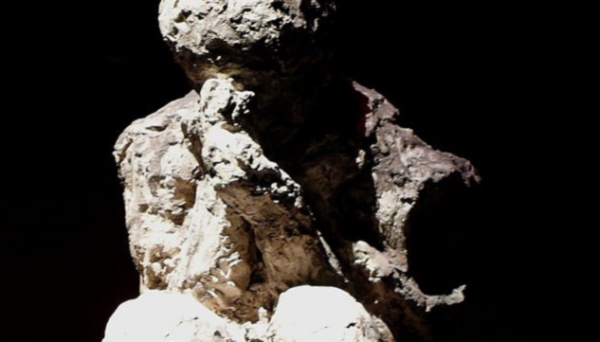
May 29, 2014, by Helen Lovatt
Pompeii: The Curious Case of the Body Casts
Katharina Lorenz asks why the casts made of bodies in Pompeii are so compelling (and so widespread in popular culture).
I am not a great fan of sword-and-sandal films, I am afraid. The Life of Brian is about what I am comfortable encountering on the screen antiquity-wise; and when it comes to Ben Hur, admittedly a classic, my favourite aspect of it is the press photographs of Charlton Heston on a Vespa during a filming break. It was therefore with some reluctance that I made my way to the cinema recently to watch the latest cineastic version of the destruction of my favourite Campanian town, Pompeii. I didn’t have a choice, really – only a couple of weeks before I had talked with our students about this upcoming film during the last sessions of the undergraduate module Pompeii (Q83POM), along with other instances of the reception of Pompeii in popular culture (how I would love to time-travel in order to see the 1903 Coney Island pyrorama live!).
Pompeii’s casts in popular culture
I’d better not comment on the film – I don’t like sword-and-sandal films, you understand (but watch this space for a review of it by my colleague, Dr Carl Buckland). However, there is one thing that struck me about the film which had already caught my attention during the preparation for the Q83POM lectures: that is, the emphasis on the body casts, in the film and more generally in the reception of Pompeii. I am sure you have all seen them: the as-if-real plaster-cast bodies of those who died during the cataclysmic eruption of Mt. Vesuvius in 79 CE, caught in the moment of their death, many showing quite vivid signs of the agony they experienced. Chilling stuff. I will never quite forget how I felt when I saw one of these bodies splayed across the stairs in the House of M. Fabius Rufus (VII 16,22) during my doctoral research (you can see a photo of this body on this excellent site). The Pompeii film shows a panorama of such bodies (not the real plaster-casts, but shapes inspired by them) as its opening shot. Body casts also featured prominently in the British Museum’s lavish Life and Death in Pompeii and Herculaneum exhibition last year; the identity of those whose body was preserved through the plaster-casting was the topic of a recent documentary; the casts even were the inspiration behind Bastille’s recent song Pompeii, at least according to what the band says in an interview.
The power of the casts
Giuseppe Fiorelli (1823-1896), famous director of the Pompeii excavations from 1860-75, would probably be very happy to see the body casts play such an important role in the image and the understanding of Pompeii today: for it is he who came up with the idea of producing them (a quick overview of how the casting works can be found here). Meanwhile, I was somewhat caught out by this focus on the body-casts: I had never paid them much attention, other than feeling a significant amount of unease when coming across them in the excavations, such as the poor chap on the stairs of the Fabius Rufus a notion of violating the dead, I suppose. In fact, I was so caught out by this that I had to do some more research into the matter after one of our students asked me in one of the lectures about how exactly these casts were produced; it had never occurred to me to look into that in any greater detail. Now, having looked into the curious case of the casts in more detail, I think I understand better why they have such an enormous pull – they offer us a means of connecting emotionally with the past, with real individuals, caught in one specific moment, sometimes also documenting human relationships – between lovers, or between mother and child. When it comes to history, we normally don’t get this type of immediacy – an immediacy that makes us seemingly experience the destruction of Pompeii ourselves. This notional immediacy is great in order to draw us into history to make us want to know more about those people whose bodies, terror, and agony are so eerily brought up in front of our eyes. And yet, I think, we must cast our view wider, look beyond the body casts, keep a critical distance, and not let their immediacy stop us from exploring Pompeii itself with its rich and complex evidence – the buildings, streets, sculptures, paintings, seeds, and pollen, evidence increasingly threatened by the forces of nature, business, and politics. Only if we are prepared to accept that the Pompeians are NOT like us despite the fact that, in their death, they very much seem to be precisely that – are we likely to understand them for our benefit, as a “nearest other”.
Picture credit: Courtesy of Ken Thomas, http://commons.wikimedia.org/wiki/User:Ken_Thomas.
No comments yet, fill out a comment to be the first

Leave a Reply